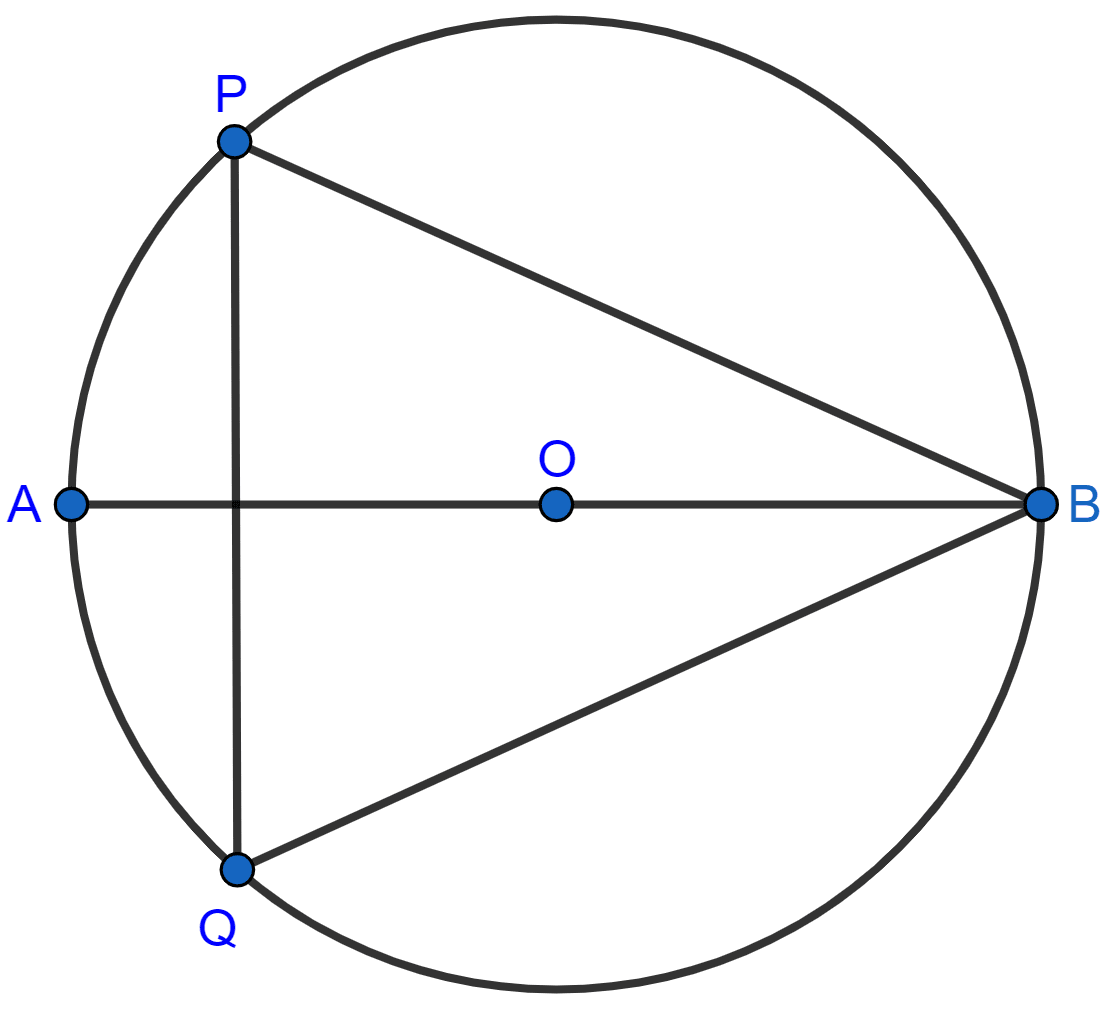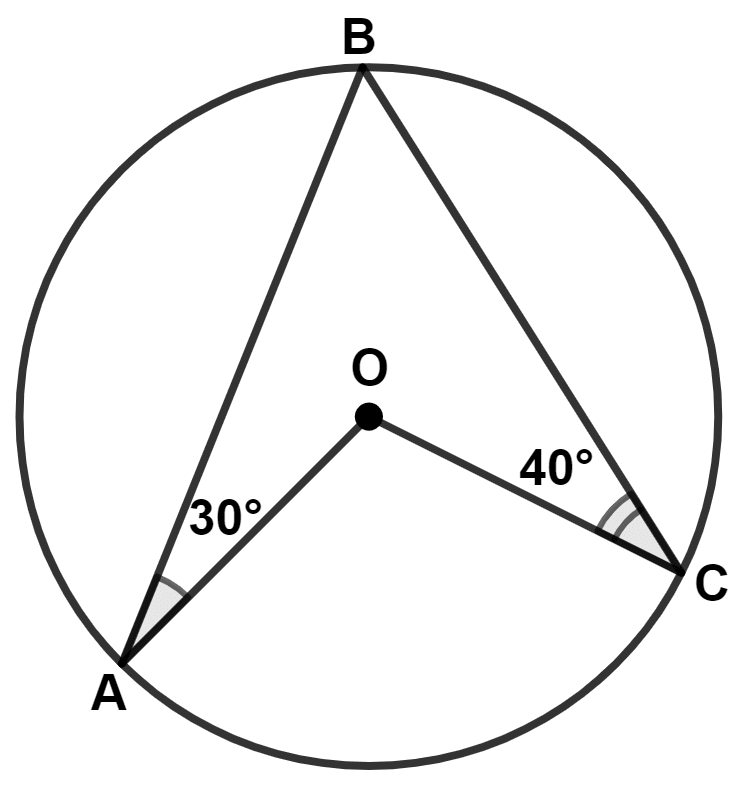Mathematics
ABCD is a trapezium with AD parallel to BC. Side BC is produced to point E and angle DCE = 95°. Angle B is equal to :
85°
105°
95°
175°

Circles
15 Likes
Answer
Given,
AD || BC
Since,
Side BC is produced to point E.
We can say that,
AD || BE
From figure,
∠ADC = ∠DCE = 95° (Alternate angles are equal)
We know that,
The opposite angles of a cyclic quadrilateral are supplementary.
∴ ∠ADC + ∠CBA = 180°
⇒ ∠CBA = 180° - ∠ADC = 180° - 95° = 85°.
Hence, Option 1 is the correct option.
Answered By
8 Likes
Related Questions
The given figure shows a circle with center O and ∠ABP = 42°. Calculate the measure of :
(i) ∠PQB
(ii) ∠QPB + ∠PBQ

In the given figure, M is the centre of the circle. Chords AB and CD are perpendicular to each other. If ∠MAD = x and ∠BAC = y :
(i) express ∠AMD in terms of x.
(ii) express ∠ABD in terms of y.
(iii) prove that : x = y.

In the given figure, ABC is an equilateral triangle. Angle ADC is :
60°
100°
80°
120°

In the given figure, O is the center of the circle. ∠OAB and ∠OCB are 30° and 40° respectively. ∠AOC is equal to :
70°
80°
150°
140°
